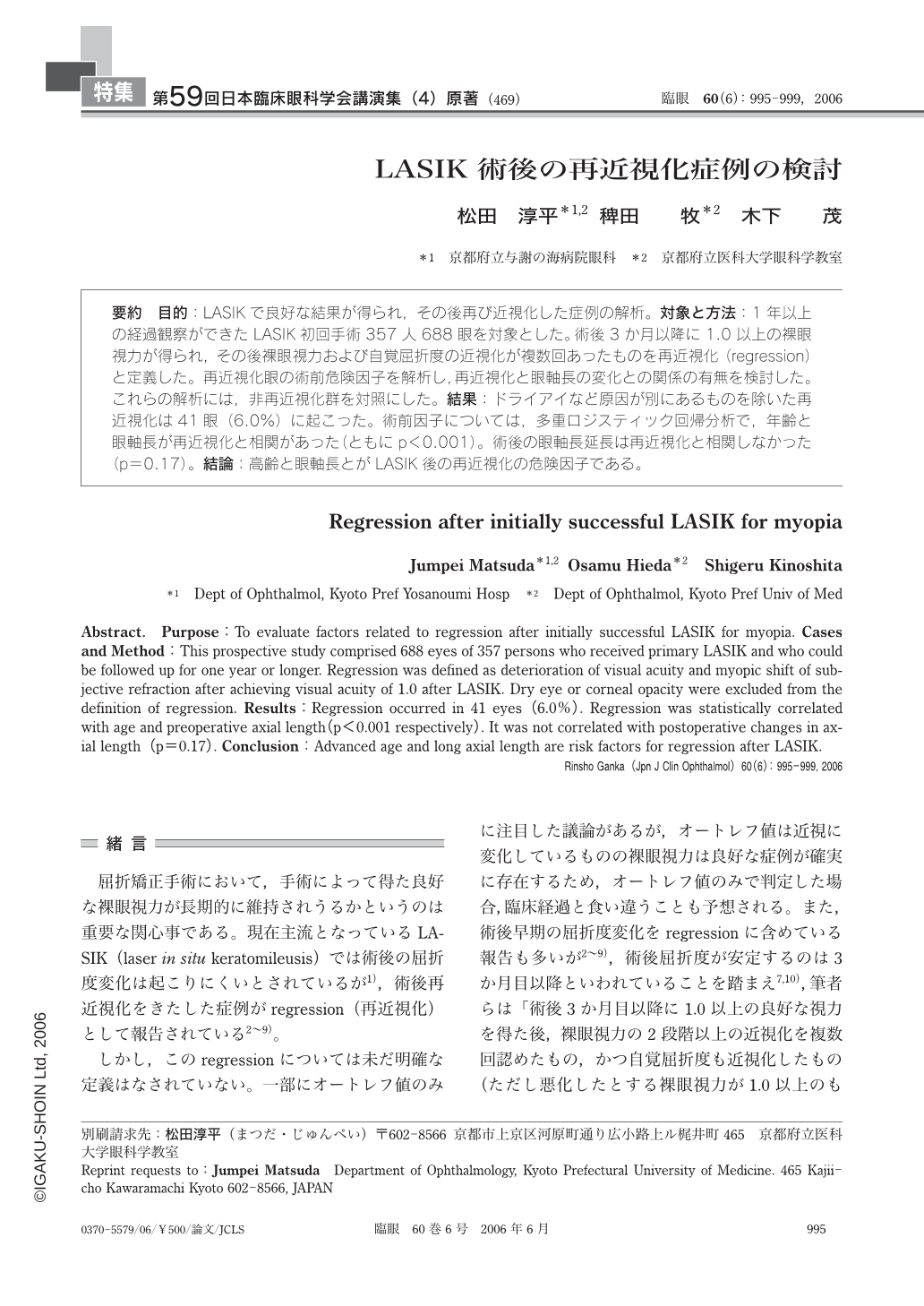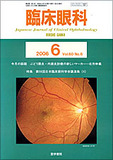Japanese
English
- 有料閲覧
- Abstract 文献概要
- 1ページ目 Look Inside
- 参考文献 Reference
目的:LASIKで良好な結果が得られ,その後再び近視化した症例の解析。対象と方法:1年以上の経過観察ができたLASIK初回手術357人688眼を対象とした。術後3か月以降に1.0以上の裸眼視力が得られ,その後裸眼視力および自覚屈折度の近視化が複数回あったものを再近視化(regression)と定義した。再近視化眼の術前危険因子を解析し,再近視化と眼軸長の変化との関係の有無を検討した。これらの解析には,非再近視化群を対照にした。結果:ドライアイなど原因が別にあるものを除いた再近視化は41眼(6.0%)に起こった。術前因子については,多重ロジスティック回帰分析で,年齢と眼軸長が再近視化と相関があった(ともにp<0.001)。術後の眼軸長延長は再近視化と相関しなかった(p=0.17)。結論:高齢と眼軸長とがLASIK後の再近視化の危険因子である。
Purpose:To evaluate factors related to regression after initially successful LASIK for myopia. Cases and Method:This prospective study comprised 688 eyes of 357 persons who received primary LASIK and who could be followed up for one year or longer. Regression was defined as deterioration of visual acuity and myopic shift of subjective refraction after achieving visual acuity of 1.0 after LASIK. Dry eye or corneal opacity were excluded from the definition of regression. Results:Regression occurred in 41 eyes(6.0%). Regression was statistically correlated with age and preoperative axial length(p<0.001 respectively). It was not correlated with postoperative changes in axial length(p=0.17). Conclusion:Advanced age and long axial length are risk factors for regression after LASIK.

Copyright © 2006, Igaku-Shoin Ltd. All rights reserved.


